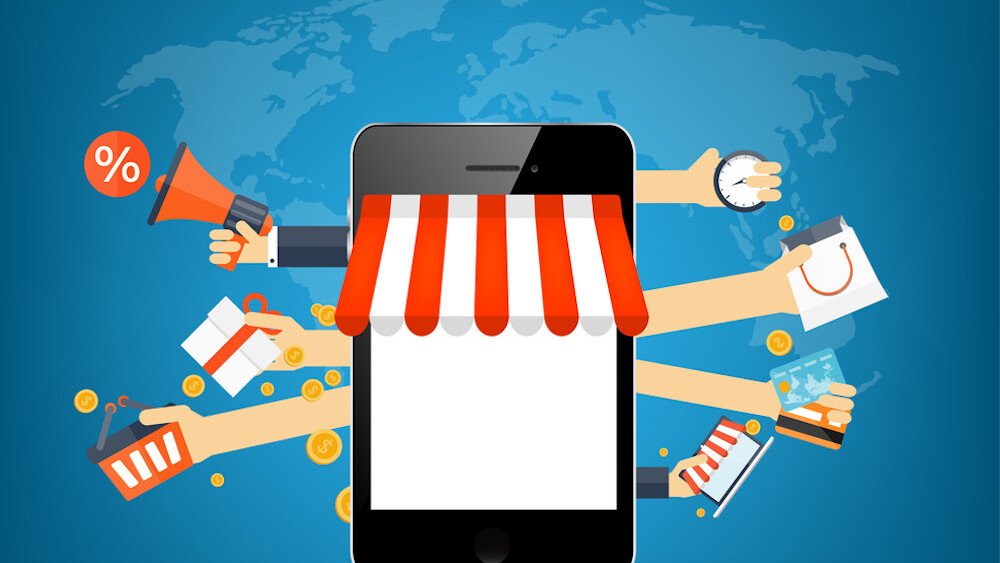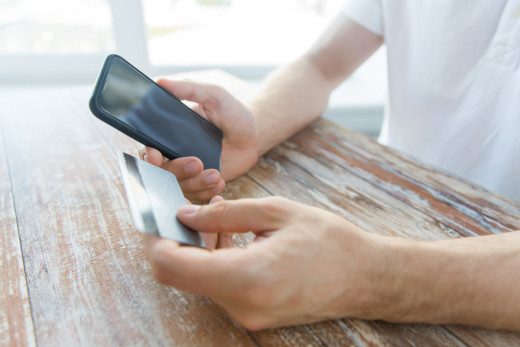
When you think of using your favorite mobile app, what words come to mind? Convenient? Simple? Frictionless? Now, what if I change the context to buying something on mobile? Do those same qualities of ease still apply?
For many consumers the answer is, unfortunately, nope. Not yet, at least. Even though shoppers may be browsing on mobile, they’re not completing those purchases. Just look at the stats: the mobile retail conversion rate is only 2.7 percent, compared to 4.4 percent on desktop. And the m-commerce shopping cart abandonment hovers somewhere between a disappointing 66 percent and a dismal 97 percent.
Why so bleak? There are a lot of various factors contributing to this underwhelming performance, but if I had to sum it up, I’d say buying on mobile still isn’t easy.
However, I’ve noticed a few technologies and trends – at various points of maturity – that hint that this year will finally be the year that making a purchase from your phone or tablet will finally feel as simple, convenient, and frictionless as it should be.
1. You can (finally) buy from anywhere
There’s been buzz about the potential of “social shopping” for years, but it’s taken a while to really pin down exactly how to harness that potential. Now, we’re closer to figuring it out: new innovations are giving users a way to make purchases directly on a social network, maybe even without leaving the platform at all.

Social networks are already, essentially, mobile experiences. More than half a billion people use Facebook solely from a mobile device. Four out of five users who log into Twitter do so from mobile. And mobile makes up 80 percent of Pinterest’s traffic.
Now, it’s simpler than ever for people to use the phones are tablets they’re already using to browse those sites to also buy products and services. All of these sites have rolled out “Buy” buttons on their platforms in the past few months. Pinterest rolled out buyable Pins in June, Twitter’s launched Buy Now in September, and Facebook has been testing and refining its buy-button options for well over a year.
There are also a host of startups on the scene, including Modest – which PayPal bought in August – which enables retailers to include buy buttons in apps, blogs, social media sites, and email. And Stripe recently unveiled Relay to enable the entire purchase process – including the processing of orders and payment information – to take place completely within an app like Twitter.
2. Retailers are (finally) putting user experience first
It may have taken a kick in the pants from Google, but the importance of having a mobile-optimized website is finally sinking in with retailers. In April, the search giant started boosting the ranking of sites that met certain criteria – like using text that can be easily read without zooming in – in mobile search results. And maybe that’s one of the reasons why 82 percent of retailers say investing in a mobile-optimized website is a high priority for them.
It’s become abundantly clear that having a website that require pinching and zooming, filling in endless form fields, and tapping a tiny “next” button multiple times just doesn’t cut it. Consumers expect more – and they should. Tablet and smartphone users are five times more likely to abandon a task if the site they’re using isn’t mobile-optimized. And yep, that includes shopping.

User experience is at the heart of what drives customer loyalty – and conversions. Gartner predicts that by the end of the year, 89 percent of e-commerce businesses will see customer experience as their competitive advantage.
3. Friction is (finally) disappearing from the payment process
Speaking of user experience, it used to be that the big retailers like Amazon were the only ones who could offer single-click ordering, and other, smaller players weren’t necessarily expected to measure up. However, next-generation apps like Instacart, Uber, and HotelTonight are revolutionizing how easy it is to order food, secure a ride, or find a place to stay – all in a couple of taps, from the convenience of your phone. Once a consumer has enjoyed this type of checkout, any less-streamlined purchasing experience on mobile is bound to feel a bit taxing.
The good news is that payment platforms like Braintree, Stripe, etc. are now building one-touch features into their offerings, so it’s easier than ever for any e-commerce shop to provide a simple, streamlined experience. And the proliferation of digital wallets like Apple Pay, Google Pay and Walmart Pay is also giving shoppers more options for an easy checkout experience.
While adoption of digital wallets is still ramping up, the technology seems to be helping retailers solve their conversion challenges. In December, PayPal announced that its One Touch product – which has been enabled by 10 million users in the past six months – has contributed to a 50 percent improvement in PayPal’s mobile conversion.
Conclusion
Taken together, all of these innovations and improvements add up to something big. Once buying on mobile is finally easy, consumers will finally love the experience of shopping on the devices they already can’t put down – and retailers will finally reap the rewards. Happy 2016!
Read next: The payment app of the future will not be a payment app
Get the TNW newsletter
Get the most important tech news in your inbox each week.




